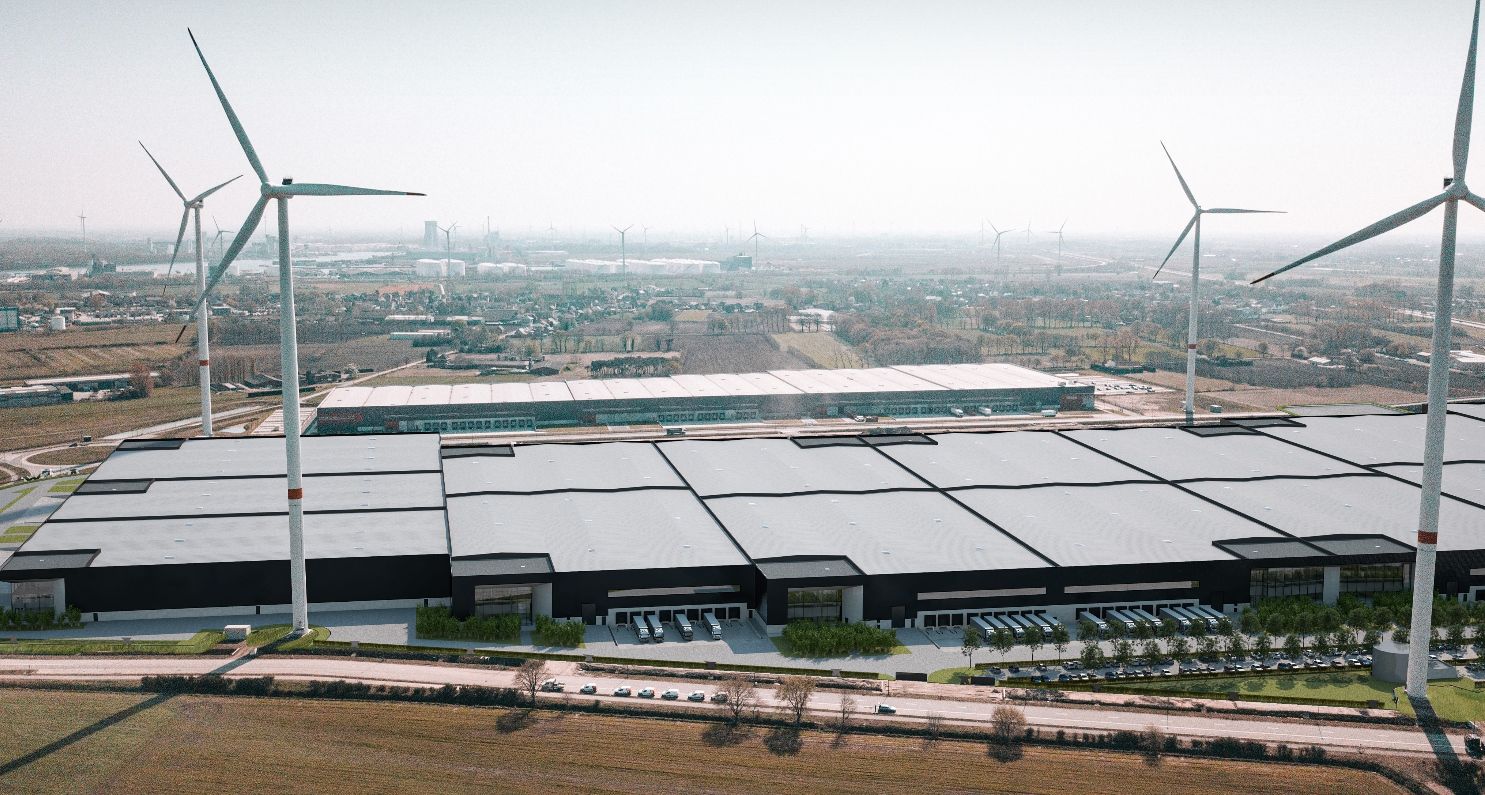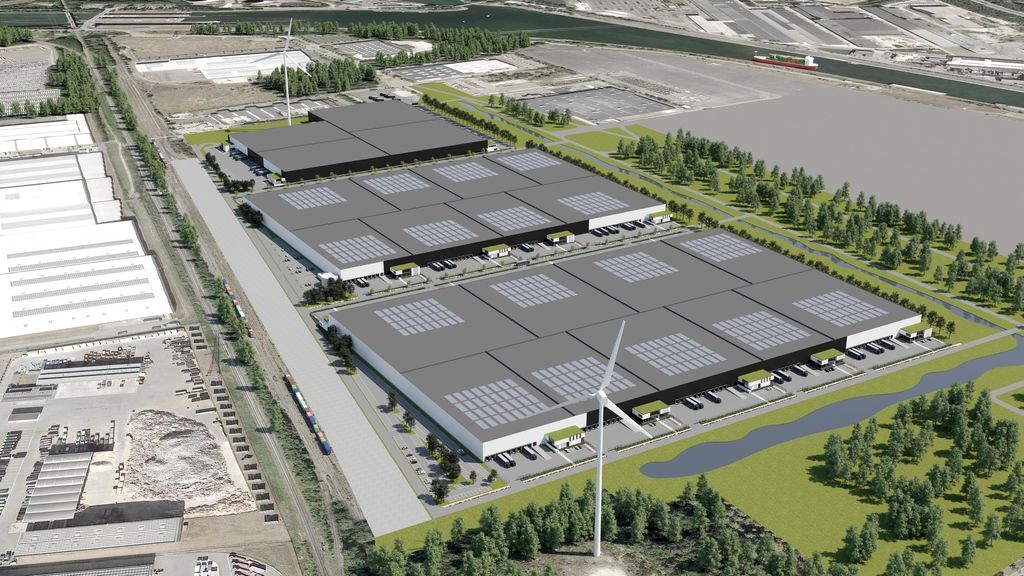Every day, 1,644 square metres of warehouse space is added in Belgium
More and more ‘super warehouses’ in Belgium
The Belgian logistics sector is booming. An estimated 600,000 square metres of new warehouses will be added this year. What’s striking is that the warehouses are becoming larger, more sophisticated, and more diverse, so-called super warehouses. Even more striking: rents are also threatening to rise for the first time in years. You currently pay 55 euros per square metre for a warehouse in a prime location in Brussels, which is an absolute record. The reason? Even during this COVID-19 pandemic, the demand for storage space remains extremely high and will increase further due to growing e-commerce. All this is shown in a market analysis by real estate group CEUSTERS, one of the most important brokers of logistic real estate in Belgium.
More than three million square metres of new warehouses. That’s how many new logistics warehouses – larger than 40,000 square metres – that were built between 2013 and 2019. That’s the equivalent of 443 football fields or 1,174 square metres per day. Never has there been more. And according to real estate expert CEUSTERS, that number will only increase in the coming years.
This year, for example, it is estimated that almost 600,000 square metres of new stock will be added, accounting for some 1,644 square metres per day. There are already about 400,000 square metres of new warehouses in Belgium in the pipeline for 2021 and 2022. The increasing demand for such warehouses is a direct result of the COVID-19 pandemic and the fact that we are all ordering a lot more online. Shops and businesses are obliged to build up more strategic stocks.
“E-commerce is flourishing like never before and the demand for storage capacity is very high. For many companies, online sales proved to be the lifeline during the lockdown. This will continue in the coming years. There’s still a lot of room for development in Belgium. Especially in Limburg and Liège, which are cheaper than Antwerp or East Flanders. The Netherlands has been on the radar for years, but the market for large logistics centres is in Belgium right now.”
Christophe Wuyts, Head of Industrial Agency, CEUSTERS
Larger, more sophisticated, and more diverse
Equally striking. Not only were more distribution centres added, they also became larger, more sophisticated, and more diverse. The so-called mega distribution centres or super warehouses. Concretely, since 2013, some 41 of those super warehouses have been built in Flanders. A good example is the Heylen Warehouses logistics hub of 150,000 square metres on a site in the Port of Ghent. There are approximately seven more of that order of magnitude in the pipeline.
“The warehouses are getting bigger and bigger because the logistics are increasingly evolving. Today, everything is much more automated or handled by robots so that you can, for example, place larger pallets in higher stacks without risk. For example, the first large two-storey distribution centre will be built in Vilvoorde, Belgium.”
Christophe Wuyts, Head of Industrial Agency, CEUSTERS
The Ports of Antwerp and East Flanders – with the Port of Ghent – are doing particularly well. About half of all warehouses were built in these provinces, while some were built on the border with Flemish Brabant.
Last year, for the first time ever, more than two million square metres of warehouses, some eight percent more than in 2018, were used. And everything looks like the take-up this year will equal or even break that record.
Low vacancy
The consequences of this boom on the warehousing market can be seen clearly now. Barely one percent of all warehouses in Belgium are empty right now. This is a historical level of vacancy, which even makes Belgium a leader in Europe. The immediately available space is rented out in record time.
“There is an acute shortage of available space in all markets. As a result, prices – which remained at the same level year after year – are beginning to rise slightly. Today, the average rent is 43 euros per square metre; in 2018 and 2017, it was 42 and 41 euros respectively. But more striking was that the highest rent in Belgium rose to 55 euros per square metre in Brussels, which is unseen.”
Christophe Wuyts, Head of Industrial Agency, CEUSTERS
Netherlands & Brexit
For years, Belgium lost large warehouses – and therefore income and employment – to the Netherlands, due to better regulation of night work. But that time is gradually coming to an end, according to CEUSTERS.
“That Belgium will play a key role for logistics in Europe in the coming years is fate. Not only will more stocks be needed because of e-commerce, but also our location remains very important. Rents in the Netherlands are 20 percent higher on average and land prices have also risen enormously. Belgium can better position itself as a cost-efficient alternative in this respect. Companies that want to establish themselves in Europe can quickly see what’s what. Moreover, they have a hard time finding any employees in the Netherlands.”
Christophe Wuyts, Head of Industrial Agency, CEUSTERS
Lastly, the real estate experts are saying that Brexit will also accelerate our market. When the UK becomes an external market, businesses will want a location within the single European market. Belgium makes for an interesting gateway, partly because of the presence of the European institutions. It’s said that this will give our market an extra boost.


